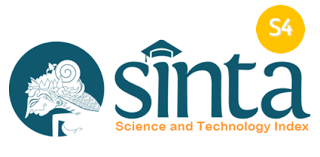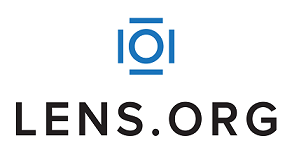DOMINANT FACTOR OF RISING URIC ACID LEVELS IN ARTHTRITIS AT WORKING AREA OF PUBLIC HEALTH IN JEMBER
DOI:
https://doi.org/10.37294/jrkn.v1i2.61Keywords:
keperawatan, kesehatan, stikes baliAbstract
Â
Abstract: Joint pain or commonly called arthritis is disease which it often found. Arthritis is a group of heterogeneous disease as that caused by deposition of monosodium urate crystals (MSU) in tissue or because of uric acid super saturation in the extracellular fluid as the most important thing of arthritis inflammation. Arthritis is an inflammation disorder which unknown cause that commonly affects synovial joints. The purpose of this research was to analyze dominant factor associated with dietary habit variables, blood urea nitrogen (BUN), and body mass index (BMI) on uric acid level in arthritis at working area of public health in Jember regency. The method of this research was correlational with cross sectional design. The technique to take the sample was purposive sample with 31 samples. Questionnaire and observation checklist used to collect the data. The research result based on the logistic regression test with 95% (ɑ ≤ 0.05) was achieved the value of p= 0.038, it means that totally dietary habit variable, BMI, and BUN levels influenced uric acid levels by seeing the value of R square that all three predictor variables influenced uric acid levels approximately 32. The accuracy of prediction variable at three independent variables on the value of uric acid levels was 67.7%. Through bivariate test showed that predictor variables which significantly has correlation on uric acid levels was BMI with significant value 0.026.
Conclusion: overall it was achieved that the variable of dietary habit, BMI, and BUN levels influenced uric acid levels and the most correlated on uric acid levels was BMI. Suggestion: implementing low purine diet, enough exercises and periodically checks the function of kidney excretion, especially in a risk group.
Â
Keywords: Dominant Factor, Uric Acid, Arthritis
Â
Downloads
References
Andry, M. (2009). Analisis Faktor-faktor yang Mempengaruhi Kadar Asam Urat pada Pekerja Kantor di Desa Karang Turi Kecamatan Bumiayu Kabupaten Brebes. Jurnal Keperawatan Soedirman, Volume 4 No. 1.
Angelina, Fransiska., Kusmiati DK., Yekti Wirawanni. (2014). Perbedaan Pengaruh Asupan Kacang Tanah (Arachishypogaea) Rebus dan Panggang terhadap Kadar Asam Urat dalam Darah pada Wanita Dislipidemia. Journal of Nutrition College, Volume 3, No. 2, Halaman 1-7.
Arikunto, Suharsimi. (2007). Prosedur Penelitian: Suatu Pendekatan Praktek, Jakarta: Rineka Cipta.
Guyton, Hall. (2007). Buku Ajar Fisiologi Kedokteran Edisi 11. Jakarta: EGC.
Hidayat, A. (2007). Riset Keperawatan & Teknik Penulisan Ilmiah. Edisi 2. Jakarta: Salemba Medika.
Hidayat, R. (2009). Gout dan Hiperurisemia. Medicinus, Scientific Journal Of Pharmaceutical Development and Medical Application, Vol. 22, No. 1.
Husnah., Dewi Rahmatika Chamayasinta.(2013). Hubungan Pengetahuan Diet Purin dengan Kadar Asam Urat Pasien Gout Arhtritis. Jurnal Kedokteran Syiah Kuala, Volume 13, Nomor 1.
Karimba, Andre., Stefana Kaligis., Diana Purwanto. (2013). Gambaran Kadar Asam Urat pada Mahasiswa Angkatan 2011 Fakultas Kedokteran Universitas Sam Ratulangi dengan Indeks Massa Tubuh ≥ 23 kg/m. Jurnal e-Biomedik (eBM), Volume 1, Nomor 1, Halaman 122-128.
Krisna, Dwi Nur Patria. (2011). Faktor Risiko Penyakit Batu Ginjal. Jurnal Kesehatan Masyarakat, Volume 7, Halaman 51-62.
Kumalasari, Tyas Sitaresmi., Saryono., Iwan Punawan. (2009). Hubungan Indeks Massa Tubuh dengan Kadar Asam Urat Darah pada Penduduk Desa Banjaranyar Kecamatan Sokaraja Kabupaten Banyummas. Jurnal Keperawatan Soedirman, Volume 4, No. 1.
Kumar, R. (2012). Dasar-dasar Patofisiologi Penyakit. Yogyakarta: Bina Rupa Aksara.
Lina, Nur., Andik Setiyono. (2014). Analisis Kebiasaan Makan yang Meyebabkan Peningkatan Kadar Asam Urat. Jurnal Kesehatan Komunitas Indonesia Vol. 10. No. 2.
Manuabu, CAI., dkk. (2009). Memahami Kesehatan Reproduksi Wanita Edisi 2. Jakarta: EGC.
Notoadmodjo, S. (2012). Metode Penelitian Kesehatan, Jakarta: Rineka Cipta.
Nursalam, (2013). Metodologi Penelitian Ilmu Keperawatan: Pendekatan Praktis, Edisi 3, Jakarta: Salemba Medika.
Murray, R. K., Granner, D. K., Mayer, P. A., Rodwell, V. M. (2009). Biokimia Harper. Alih bahasa oleh Brahm U. Pendit. Edisi 27.EGC, Jakarta.
Saputra, L. (2010). Intisari Ilmu Penyakit Dalam: Disertai Contoh Kasus Klinik. Jakarta: Binarupa Aksara.
Saraswati , S. (2009). Diet Sehat Untuk Penyakit Asam Urat, Diabetes, Hipertensi, dan Stroke. Yogyakarta: A Plus Books.
Silbernagl, Stefan. (2007). Teks & Atlas Berwarna Patofisiologi. Jakarta. EGC.
Sustrani, L. (2009). Asam Urat. Jakarta: PT Gramedia Pustaka Utama.
Sutanto, T. (2013). Asam Urat Deteksi, Pencegahan, Pengobatan. Yogyakarta: Buku Pintar.
Syukri, M. (2007). Asam Urat dan Hiperurisemia. Departemen Ilmu Penyakit Dalam, Fakultas Kedokteran Unsyiah. Majalah Kedokteran Nusantara Volume 40, No. 1.
Wilson, M. Lorainne & Price, A Sylvia. (2006). Patofisiologi Volume 2 Edisi 6, Jakarta: EGC

 TEMPLATE JURNAL
TEMPLATE JURNAL








